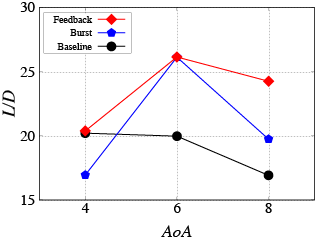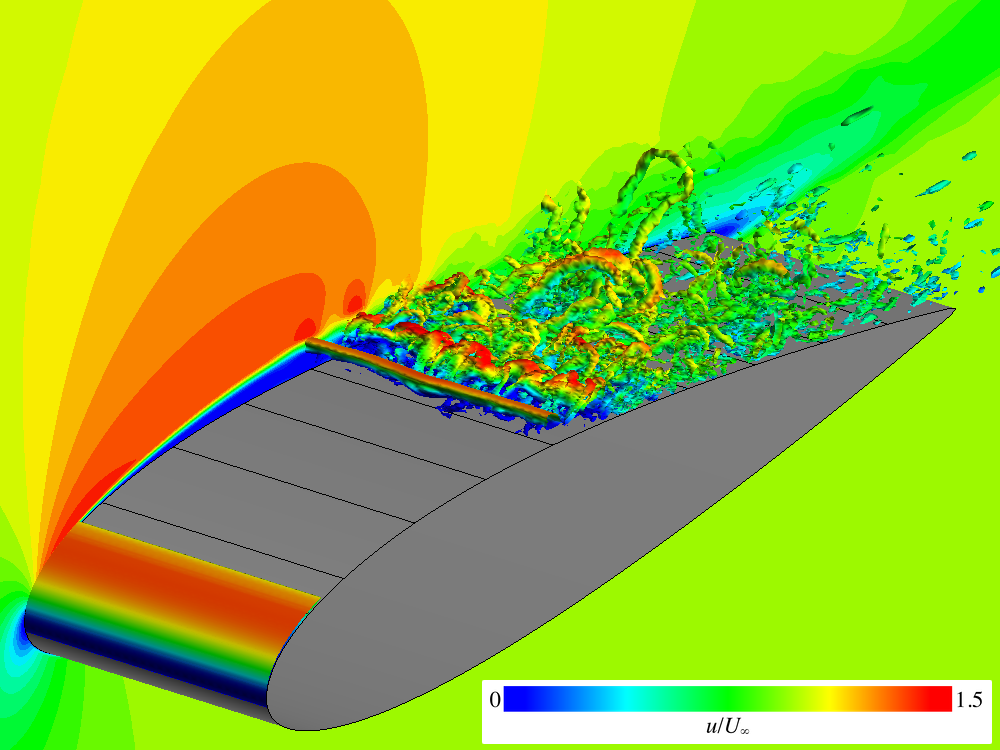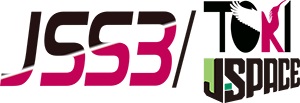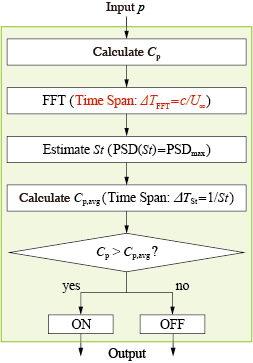Feedback Control of Flow Separation Using DBD Plasma Actuator
JAXA Supercomputer System Annual Report April 2019-March 2020
Report Number: R19EACA26
Subject Category: JSS2 Inter-University Research
- Responsible Representative: Kengo Asada, Tokyo University of Science, Department of Information and Computer Technology, Postdoctoral Researcher
- Contact Information: Kengo Asada(asada@rs.tus.ac.jp)
- Members: Kengo Asada, Takuto Ogawa
Abstract
The project develops flow control technic by using dielectric barrier discharge (DBD) plasma actuator to establish high efficient and robust vehicle systems such as rockets, aircrafts, and motor vehicles. We propose and demonstrate feedback control methods to adapt unsteady flows over the vehicles through a series of high-fidelity unsteady simulations.
Reference URL
N/A
Reasons and benefits of using JAXA Supercomputer System
To perform large-scale three-dimensional unsteady flow simulations using the compressible fluid solver LANS3D, which has a wealth of computational achievements with a JAXA supercomputer system.
Achievements of the Year
High-fidelity large-eddy simulations of the flow (Re=63,000) controlled by a DBD plasma actuator (PA) over a NACA0015 airfoil were performed to verify the effectiveness of the feedback control model which we propose. The present feedback model (Fig. 1) drives PA located in the vicinity of the leading edge according to the passing of vortices above a pressure sensor on the upper side of the airfoil. The passing of vortices is detected by abrupt pressure decrease compared to a moving-averaged pressure value. In the present model, the time range of the moving average is varied according to FFT analysis.
By last year, we had verified the validity of the control model at the angle of attack after stall (over 12 degrees). Since the proposed control model is assumed to be used in a wider range of conditions, this year we examined whether the proposed control law is effective at angles of attack (4, 6, and 8 degrees) before the stall.
Figure 2 shows the lift-drag ratio (L / D) of each control method at each angle of attack. The proposed control model (feedback) gives a higher lift-drag ratio as compared to the non-control case (Baseline). It can be seen that a lift-drag ratio equal to or greater than that of the burst operation (ON / OFF switching periodically) is provided. In burst drive, it is necessary to set control parameters such as drive frequency to appropriate values in advance, but the proposed control model automatically changes the ON / OFF of PA to improve the lift-drag ratio.
Figures 3 and 4 show the vortex structures by iso-surface of Q-criterion colored by freestream velocity in the feedback control case (Feedback) and non-control case (Baseline) at 6 degrees, respectively. In the Baseline case, the laminar separation occurs at the leading edge, followed by a turbulent transition. In the Feedback case, the spanwise vortex structures pass along the airfoil surface. The plasma actuator is driven once when the spanwise vortex structure is passing above the pressure sensor, and the additional vortex structures are generated by actuation. These processes orderly arrange the vortices and contribute to keeping the steady aerodynamic performance.

Fig.2: Lift and drag ratios (L/D) when each control method is applied to the flow around the NACA0015 airfoil.

Fig.3: Vortex structures by iso-surface of Q-criterion colored by freestream velocity under the uncontrol case (Baseline) at 6 degree.

Fig.4: Vortex structures by iso-surface of Q-criterion colored by freestream velocity under the feedback control (Feedback) at 6 degree.
Publications
– Non peer-reviewed papers
Ogawa, T., Asada, K., Tatsukawa, T., and Fujii, K., “Computational Analysis of the Control Authority of Plasma Actuators for Airfoil Flows at Low Angle of Attack”, AIAA Scitech, Orland, Florida, USA, Jan. 2020.
Ogawa, T., Asada, K., Tatsukawa, T., and Fujii, K., “Large-eddy simulations of flows controlled by DBD plasma actuator for better wing performance at cruise conditions”, JSME Conference 2019, Akita, Sep. 2019.
Usage of JSS2
Computational Information
- Process Parallelization Methods: MPI
- Thread Parallelization Methods: OpenMP
- Number of Processes: 79 – 84
- Elapsed Time per Case: 30 Hour(s)
Resources Used
Fraction of Usage in Total Resources*1(%): 0.29
Details
Please refer to System Configuration of JSS2 for the system configuration and major specifications of JSS2.
| System Name | Amount of Core Time(core x hours) | Fraction of Usage*2(%) |
|---|---|---|
| SORA-MA | 2,576,897.21 | 0.31 |
| SORA-PP | 0.00 | 0.00 |
| SORA-LM | 0.00 | 0.00 |
| SORA-TPP | 0.00 | 0.00 |
| File System Name | Storage Assigned(GiB) | Fraction of Usage*2(%) |
|---|---|---|
| /home | 52.45 | 0.04 |
| /data | 15,315.10 | 0.26 |
| /ltmp | 2,929.69 | 0.25 |
| Archiver Name | Storage Used(TiB) | Fraction of Usage*2(%) |
|---|---|---|
| J-SPACE | 0.00 | 0.00 |
*1: Fraction of Usage in Total Resources: Weighted average of three resource types (Computing, File System, and Archiver).
*2: Fraction of Usage:Percentage of usage relative to each resource used in one year.
JAXA Supercomputer System Annual Report April 2019-March 2020



